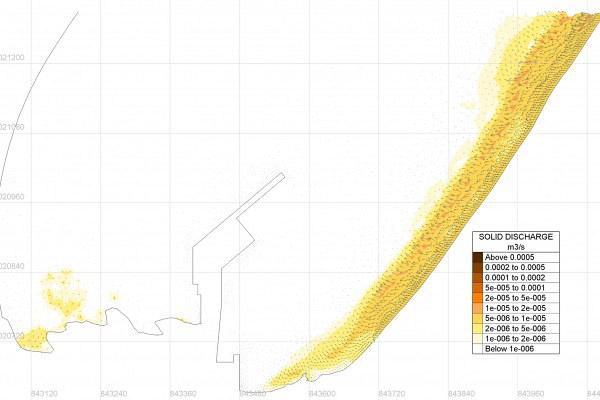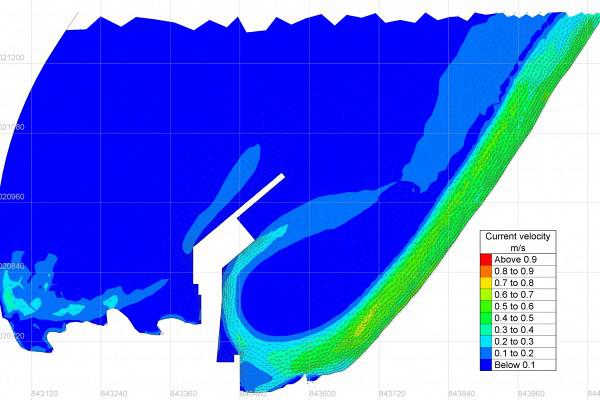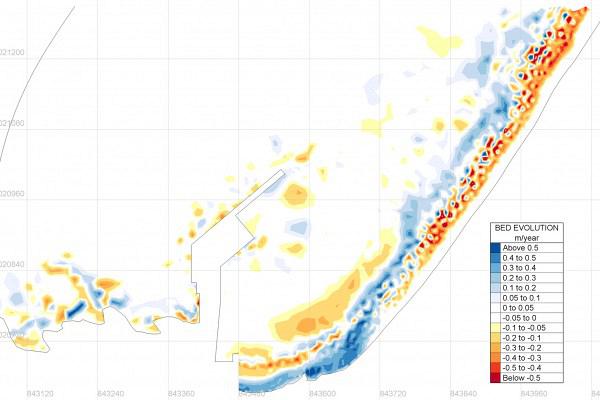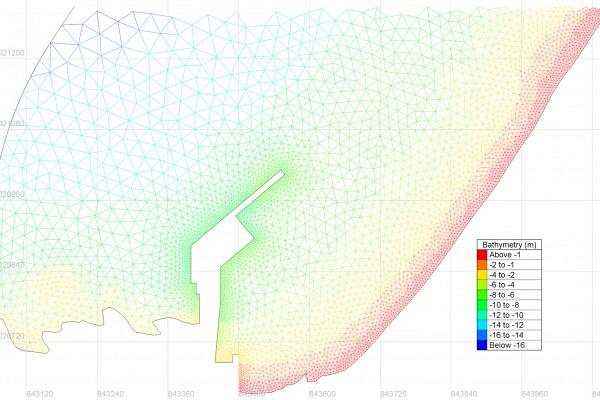Port of Kameiro Skala - Rhodes Island
Kameiro Skala lies at the west coast of the island, approximately 45 km driving distance from the island’s capital city of Rhodes. The existing port facilities consist of a dock that serves the ferry route to Chalki Island and occasionally small cargo vessels. Small fishing and recreational vessels moor at the shallower part of the dock. Due to the dock being exposed to wave attack, the vessels moor exclusively at the eastern side of the dock, which is partially protected from the prevailing wave directions.
Our company was awarded the design contract to upgrade the port facilities by the Municipal Port Authority of Southern Dodecanese. The scope of the design included a sediment transport study of the proposed layout.
The existing port facilities of Kameiro Skala do not suffer any other sediment transport problem beyond the accumulation of dead seaweed (posidonia oceanica) and shoreline erosion downstream of the project. Seaweed accretion does not obstruct the operation of the port, but is a nuisance to neighboring businesses and properties because of the bad odor caused by their decay. The coastline downstream of the project suffers from erosion, as is the case for most of the western coast of the island.
To investigate the impact of the construction of the proposed project, two mathematical models were set up, one for the study of sediment transport and another specifically for algae transport.
The offshore wave characteristics were estimated using the JONSEY model from the Seaworks marine software suite and coastal sediment transport simulation was carried out with the TMS (Telemac-Mascaret System) numerical model suite. TMS is based on the internal coupling of the individual models of wave propagation (TOMAWAC), wave induced currents (TELEMAC2D) and sediment transport (SISYPHE). The accretion of seaweed was investigated using the built-in «ALGAE TRANSPORT MODEL» of TELEMAC2D.
Sediment transport study facts:
- Mesh dimension 1,100x650 m, 13,000 elements and 7,000 nodes
- 2 project layouts
- One year simulation time, 4 wind directions, all wind intensities above and including 3bf.
Algae transport study facts:
- Mesh dimension 1,100x650 m, 13,000 elements and 7,000 nodes
- 2 project layouts
- 100,000s simulation time for every wind direction (4), all wind intensities above and including 4bf.
- Trajectory tracking of approximately 1800 algae particles.




